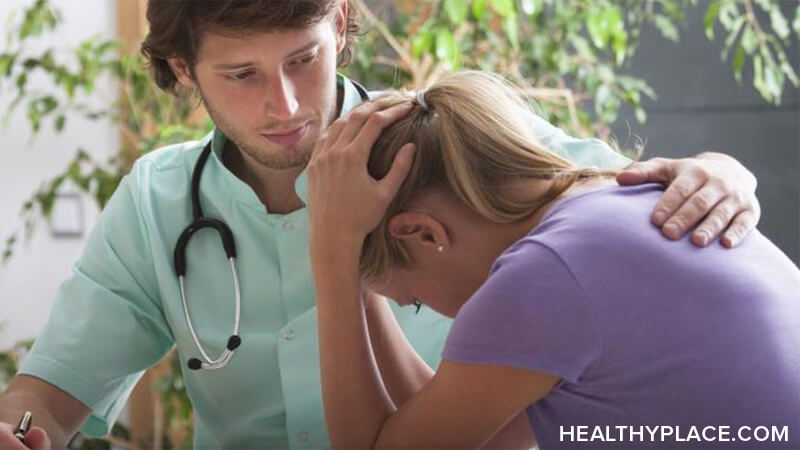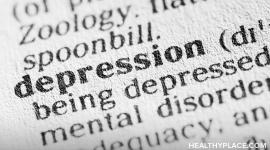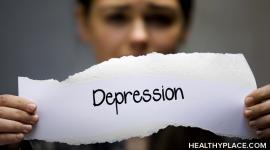Depression Diagnosis and How is Depression Diagnosed?

Diagnosis of depression, and other mental illnesses, is different than for many other medical conditions. The depression diagnosis relies on information supplied by the patient both passively (how a patient looks, for example) and through interviews. While this may seem haphazard, a depression diagnosis is highly standardized. Depression diagnostic criteria are clearly laid out, as is the examination used to evaluate those criteria.
Diagnostic Criteria for Depression
Depression diagnostic criteria are set forth in the latest version of the Diagnostic and Statistical Manual of Mental Disorders (DSM-IV-TR). The DSM is used to diagnose all mental illness. A DSM-IV-TR diagnosis of depression meets at least five of the following criteria for at least two weeks:1
- Depressed mood (For children and adolescents, this can also be an irritable mood. See: Depression in Children)
- Diminished interest or loss of pleasure in almost all activities (anhedonia)
- Significant weight change or appetite disturbance (For children, this can be failure to achieve expected weight gain.)
- Sleep disturbance (insomnia or hypersomnia) (See: Depression and Sleep Disorders)
- Psychomotor agitation or retardation
- Fatigue or loss of energy
- Feelings of worthlessness
- Diminished ability to think or concentrate; indecisiveness
- Recurrent thoughts of death, suicidal (See: Suicide, Suicide Thoughts)
- A pattern of long-standing interpersonal rejection ideation, suicide attempt, or specific plan for suicide
Additional depression diagnosis criteria are as follows:
- At least one of the symptoms must be diminished interest/pleasure or depressed mood.
- The symptoms must cause significant distress or impairment of functioning in social, occupational, or other important areas.
- Depression should not have been precipitated by the direct action of a substance or a general medical condition.
- Symptoms should not meet criteria for a mixed episode (ie, for both manic and depressive episode). (See: Differences Between Unipolar Depression and Bipolar Depression)
- Symptoms are not better accounted for by bereavement (ie, the symptoms persist for longer than 2 months or are characterized by marked functional impairment, morbid preoccupation with worthlessness, suicidal ideation, psychotic symptoms, or psychomotor retardation). (See also: Psychotic Depression Symptoms and Treatment)
- A major depressive episode should not be superimposed on schizophrenia, schizophreniform disorder, delusional disorder, or a psychotic disorder not otherwise specified (NOS).
Depression Diagnosis Tests
While biological changes are evident in those with depression, there is no physiological test for a depression diagnosis. Instead, medical tests are used to rule out other possible causes of the patient's symptoms and a history and mental status examination is completed.
Categories of physical illnesses that may account for depressive symptoms include:2
- Infection
- Medication
- Endocrine (such as a thyroid problem)
- Tumor
- Neurologic disorder
The Mental Status Examination (MSE) is a methodical test for diagnosing depression. An MSE considers how a patient looks and acts as well as their responses to specific questions relating to diagnosis of clinical depression and other mental disorders. Areas included in an MSE include:3
- How the patient looks and their attitude towards the doctor
- Evaluation of projected and perceived mood
- Speech irregularities
- Thought process and thought content irregularities
- Insight, judgment, impulsivity and reliability
Take our free online depression test here.
After the Depression Diagnosis
A diagnosis of major depressive disorder can be upsetting or frightening to a person and may affect his self-image and self-esteem. A comprehensive treatment plan, including education on a depression diagnosis is the best way to help the patient work through these feelings.
It's important to realize that 70%-80% of individuals with major depressive disorder respond to treatment, although up to 50% of patients may not respond to the first treatment. (See: Depression Treatment Options)
APA Reference
Tracy, N.
(2021, December 30). Depression Diagnosis and How is Depression Diagnosed?, HealthyPlace. Retrieved
on 2025, December 15 from https://www.healthyplace.com/depression/depression-information/depression-diagnosis-and-how-is-depression-diagnosed


